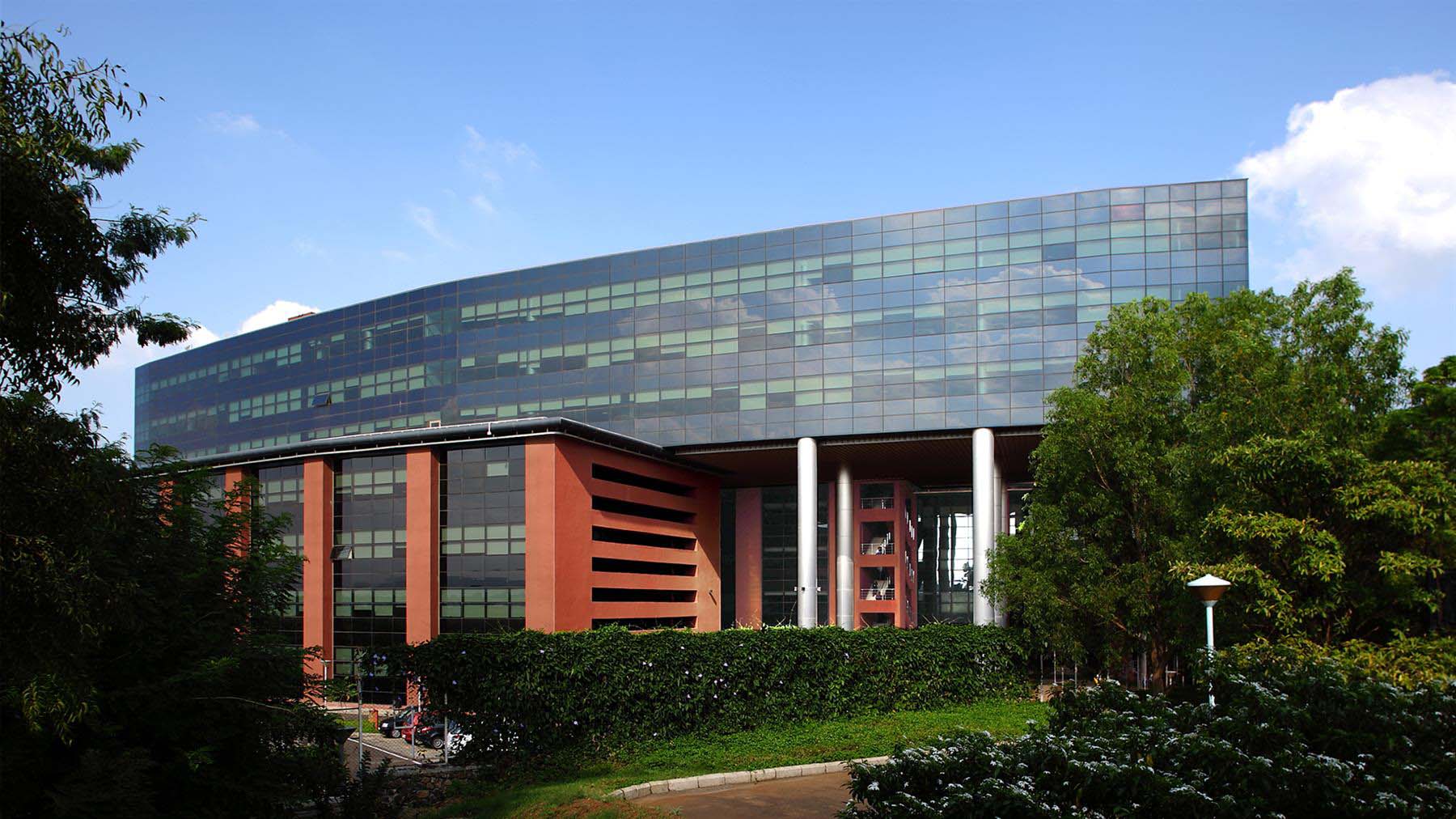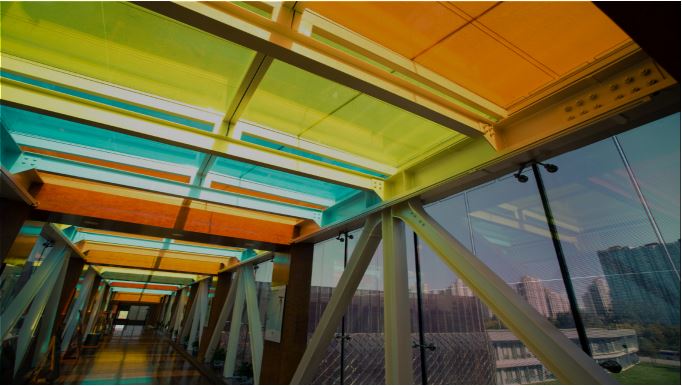What is Switchable Glass? Benefits and Applications in Modern Architecture
As architectural design evolves to meet the demands of modern living, there’s a growing focus on creating spaces that are both functional and dynamic. One of the most innovative materials helping architects achieve this is switchable glass—also known as smart glass or electrochromic glass. Switchable glass provides privacy, energy efficiency, and versatility at the touch of a button, making it an increasingly popular choice in cutting-edge building projects.
In this blog, we’ll explore what switchable glass is, how it works, and the many benefits it offers in both residential and commercial architecture.
1. What is Switchable Glass?
Switchable glass is a type of glass that can change its transparency in response to an electrical signal. It allows users to control the glass's opacity, switching it from clear to frosted (opaque) and back again. This transformation is achieved through electrochromic technology, in which liquid crystals or special coatings inside the glass react when an electrical current is applied.
In its clear state, switchable glass behaves like regular transparent glass, allowing natural light to pass through. When switched to opaque, the glass becomes frosted, providing privacy while still letting in diffuse light.
There are several types of switchable glass, including:
- PDLC (Polymer Dispersed Liquid Crystal) Switchable Glass: The most common type, where liquid crystals suspended in a polymer react to an electric current to control opacity.
- Electrochromic Glass: This type uses chemical reactions within the glass layers to darken or lighten the glass based on electrical input.
- Suspended Particle Device (SPD) Glass: Tiny particles suspended in the glass align or disperse when activated, controlling the level of light and transparency.
2. How Does Switchable Glass Work?
Switchable glass works by embedding liquid crystals, electrochromic materials, or suspended particles between layers of glass or film. These materials respond to an electrical charge, rearranging themselves to either block or allow light to pass through.
- In PDLC switchable glass, when no current is applied, the liquid crystals are randomly oriented, scattering light and creating an opaque or frosted appearance. When an electrical current is applied, the crystals align, allowing light to pass through and making the glass clear.
- Electrochromic glass darkens or lightens by controlling the flow of ions between layers, which can reduce light transmission and increase privacy or shading.
Switchable glass is often controlled via a remote, a smart home system, or wall switches, giving users the ability to adjust the glass to their desired level of transparency.
3. Benefits of Switchable Glass in Architecture
Switchable glass is more than just a privacy feature; it offers a range of functional and aesthetic benefits that can transform how buildings perform and interact with their environment. Here are some of the top benefits:
a. Privacy on Demand
One of the most obvious benefits of switchable glass is its ability to provide instant privacy. With a simple flip of a switch or press of a button, switchable glass can transition from clear to frosted, making it perfect for:
- Offices: In meeting rooms, switchable glass can provide privacy during confidential meetings, then turn clear again to create an open, collaborative space.
- Bathrooms: Switchable glass is ideal for residential bathrooms or hotel suites, offering a sleek, modern alternative to traditional frosted glass or blinds.
- Hospital Rooms: In healthcare settings, switchable glass partitions can ensure patient privacy while maintaining visibility for staff when needed.
b. Maximizing Natural Light
Natural light is a key element in modern architecture, but too much direct sunlight can lead to glare, overheating, and UV damage. Switchable glass allows users to manage light transmission, reducing glare and controlling light levels without the need for curtains, blinds, or shades.
In offices, for example, switchable glass can optimize the amount of light entering the space, enhancing the work environment by allowing natural light to flow in while preventing excessive brightness that could cause discomfort or glare on screens.
c. Energy Efficiency
Switchable glass can contribute to energy savings by improving thermal insulation and reducing heat gain from sunlight. When used in windows, doors, or facades, it helps regulate interior temperatures by:
- Blocking solar heat in the summer when the glass is in its opaque or tinted state, reducing the need for air conditioning.
- Allowing more sunlight in during the winter, which helps warm up spaces naturally and reduces heating costs.
For buildings designed to meet green standards like LEED, switchable glass can help reduce energy consumption and enhance the building’s environmental performance.
d. Versatility in Design and Functionality
Switchable glass provides architects and designers with unparalleled flexibility in terms of both aesthetics and functionality. Since the glass can change its appearance at the touch of a button, it eliminates the need for bulky curtains, blinds, or partitions, allowing for clean, minimalist designs that fit seamlessly into modern spaces.
Common applications include:
- Partition walls in offices and homes that can switch between transparent and private with ease.
- Windows and skylights in commercial buildings, hotels, and residential spaces that manage sunlight and provide privacy.
- Exterior facades and storefronts that can change to block out intense sunlight while maintaining a sleek design.
e. Reducing Maintenance and Cleaning
Switchable glass eliminates the need for blinds, shades, or curtains, which not only clutter spaces but also require regular cleaning and maintenance. By opting for switchable glass, building owners and occupants can enjoy a cleaner, low-maintenance environment.
This is particularly useful in healthcare environments or high-traffic areas where dust, dirt, or bacteria can accumulate on traditional window coverings. With switchable glass, there are no fabric surfaces to clean, making it a more hygienic solution.
f. Enhancing Security
Switchable glass can also improve building security by controlling visibility. For example, in high-security offices or banking environments, the glass can be frosted or darkened to obscure sensitive information or valuable assets from view, adding a layer of privacy and security.
Additionally, switchable glass can be used in residential buildings to protect privacy in bedrooms, bathrooms, and other sensitive areas without compromising the design.
4. Applications of Switchable Glass in Architecture
Switchable glass is a versatile material that can be used in various applications across both residential and commercial buildings. Some of the most common uses include:
a. Office Buildings
In office spaces, switchable glass is commonly used for meeting rooms, conference areas, and executive offices. It creates flexible workspaces where employees can enjoy an open environment or quickly switch to privacy for sensitive discussions or presentations.
b. Hospitals and Healthcare Facilities
In hospital rooms or operating theaters, switchable glass can replace traditional curtains or blinds, providing hygienic, easy-to-clean privacy solutions. It also allows healthcare providers to monitor patients while ensuring their privacy when needed.
c. Residential Homes
In homes, switchable glass is often used for bathrooms, shower enclosures, windows, and sliding doors. It offers modern, sleek alternatives to traditional privacy methods while enhancing the overall design aesthetic of the home.
d. Hotels and Hospitality
Switchable glass is a popular choice in luxury hotels, where it can be used in bathrooms, balconies, and suites to offer guests enhanced comfort and privacy while maintaining a luxurious, contemporary design.
e. Retail Spaces
For storefronts, switchable glass can provide a dynamic, interactive element, allowing retailers to highlight displays or create privacy for certain areas on demand. It also allows for flexibility in showcasing products while maintaining a clean, modern look.
5. Future Trends and Innovations in Switchable Glass
As smart glass technology continues to evolve, new innovations are making switchable glass even more advanced and accessible. Some of the emerging trends include:
- Smart home integration, where switchable glass can be controlled through smartphones or voice commands.
- Energy-harvesting switchable glass, which combines the benefits of smart glass with solar panels to generate energy while controlling light and heat.
- Improved electrochromic technology that enables switchable glass to respond more quickly to environmental changes.
These innovations will make switchable glass an even more integral part of sustainable building design and smart architecture.
Why Switchable Glass is the Future of Modern Architecture
Switchable glass is revolutionizing how buildings are designed and used, offering a unique combination of privacy, flexibility, energy efficiency, and aesthetic appeal. As architects and designers continue to seek innovative ways to create sustainable, dynamic spaces, switchable glass is emerging as a go-to material that can enhance both the functionality and beauty of modern buildings.
From residential homes to commercial offices and luxury hotels, switchable glass is setting a new standard for versatile, energy-efficient architecture that adapts to the needs of its occupants.
Ready to explore the possibilities of switchable glass for your next project? Contact FG Glass today to learn more about our wide range of switchable glass solutions and discover how we can help you create smarter, more dynamic spaces.

You might also like
Feb 21, 2022 by TARIQ KACHWALA
Feb 21, 2022 by TARIQ KACHWALA
Feb 23, 2022 by TARIQ KACHWALA










